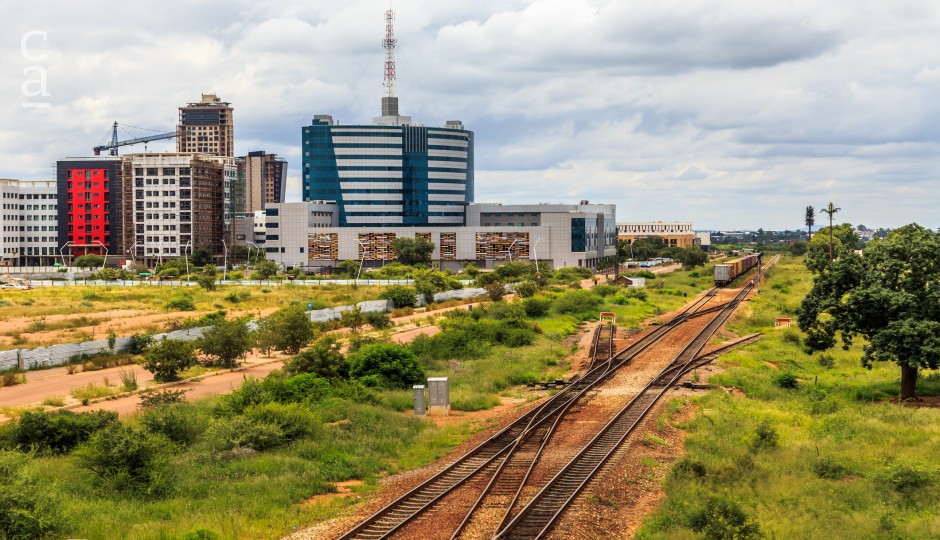Blockchain and the Built Environment
A New Economic Foundation for the 21st Century

Introduction
A few years ago, I came across the concept of ‘assumption reversal’. The idea that innovation thrives when fundamental principles are flipped on their head. Take trust, for example: for centuries, money has served as the primary trust mechanism, transcending borders and cultures to facilitate cooperation and exchange. But what if trust could be established not by intermediaries, but by code?
Blockchain technology is more than just a technological breakthrough. It represents a fundamental paradigm shift. Its brilliance lies in its ability to redefine trust itself, challenging money’s role as the ultimate trust system. But its implications stretch far beyond finance. It is set to disrupt the very foundations of our global economy, from how we build cities to how we manage public goods.
The global economy runs on infrastructure. Roads, bridges, ports, and power grids are the backbone of productivity, yet their financing and management remain plagued by inefficiencies, corruption, and misallocation of capital. Blockchain—a technology often mischaracterised as little more than the engine behind cryptocurrency speculation—has the potential to transform this sector. By reducing transaction costs, enforcing transparency, and unlocking new sources of capital, blockchain offers a compelling solution to one of the most pressing economic challenges of our time.
In this series on ‘Blockchain & the Built Environment’, I will attempt to unearth the true potential of blockchain technology and cut through the noise surrounding an often-misunderstood innovation.
The Fundamentals of Blockchain: The Trust Engine
Blockchain is, at its core, a distributed ledger technology (DLT) that records transactions across decentralised networks. It guarantees:
- Immutability: once a record is added, it cannot be altered.
- Transparency: all participants have access to the same information.
- Efficiency: middlemen are removed, reducing costs and delays; and
- Liquidity: assets can be tokenised and traded in fractional units.
These features, long absent in infrastructure development, could revolutionise how projects are funded, managed, and delivered.
Types of Blockchain and Their Role in Infrastructure
Public Blockchains: Decentralised and Open
Public blockchains, such as Bitcoin and Ethereum, are open networks where anyone can participate. Instead of relying on a central authority, these systems use a collective verification process to ensure transactions are secure and trustworthy.
Imagine a giant public ledger, visible to all, where every transaction is recorded in ink that cannot be erased. But before a new transaction is added, a global race takes place where computers, or ‘miners,’ compete to solve a complex puzzle, much like cracking a coded lock on a vault. The first to solve it gets to update the ledger and is rewarded for their effort.
This process, known as Proof-of-Work (PoW), makes tampering nearly impossible—rewriting history would require redoing the entire race across thousands of computers simultaneously, a feat so difficult it becomes unfeasible. However, just like a vault with an unbreakable lock, this method comes at a cost: it’s slow and consumes vast amounts of energy.
Despite its limitations, PoW remains the foundation of truly decentralised networks, ensuring that no single entity controls transactions, and that trust is established not by intermediaries, but by mathematical certainty.
Private and Hybrid Blockchains: Balancing Control and Transparency
Unlike public blockchains, which function like an open town hall meeting where anyone can listen and contribute, Private Blockchains operate more like an exclusive boardroom. Only approved participants are allowed inside, and decisions are governed by a select group.
These networks are managed by a central authority or a consortium, ensuring that only verified entities can participate. This controlled access allows for faster transactions, greater efficiency, and enhanced privacy, making them particularly useful for governments, corporations, and financial institutions.
Imagine a bank’s internal ledger: employees can access and update records, but the public cannot. This setup is essential for industries where data confidentiality is critical, such as supply chain tracking, land registries, and financial settlements. A manufacturer, for instance, may use a private blockchain to track products from factory to retailer, ensuring that only trusted suppliers and auditors can view and verify transactions.
Hybrid blockchains offer a middle ground, merging elements of both public and private systems, much like a government transparency initiative that publishes key financial reports but keeps sensitive procurement data restricted. This balance is especially valuable for infrastructure projects involving multiple stakeholders, ensuring public accountability without exposing confidential data to unnecessary risks.
Blockchain’s Role in Infrastructure Development
1. Eliminating Intermediaries in Financing
The financing of infrastructure projects is notoriously inefficient. Banks, regulators, and insurers create layers of bureaucracy that increase costs and slow capital deployment. Blockchain-based financing mechanisms, such as decentralised finance (DeFi) and tokenisation, could eliminate these inefficiencies, enabling direct investment into infrastructure.
In Africa, where 57% of the population remains unbanked, blockchain could allow local and international investors to fund infrastructure projects directly, bypassing cumbersome financial institutions and unlocking new capital flows.
2. Increasing Transparency and Reducing Corruption
According to the World Bank, up to 30% of global infrastructure spending is lost to fraud, inefficiencies, and mismanagement. Traditional financing and procurement models lack accountability, leading to cost overruns and wasted resources.
Blockchain’s immutable ledger could ensure that funds are allocated and spent as intended. For example, an early-stage construction project could use blockchain-based smart contracts, ensuring that payments are only released upon independent verification of project milestones, drastically reducing financial mismanagement.
3. Automating Contract Execution with Smart Contracts
Smart contracts (self-executing agreements with predefined conditions) can automate payments, enforce compliance, and remove administrative inefficiencies in infrastructure projects.
A large-scale port development, for instance, could use blockchain to ensure that contractors receive payments only upon verified completion of each construction phase. This reduces delays, contract disputes, and opportunities for corruption, while ensuring real-time accountability.
4. Unlocking Liquidity Through Tokenisation
Infrastructure investment has historically been highly illiquid, requiring large capital commitments over long periods. Tokenisation (dividing large assets into tradeable digital shares) allows for fractional ownership and increased liquidity.
Consider a public-private bridge development project. Instead of relying solely on government bonds or institutional investors, blockchain could allow retail investors to own a fraction of the bridge and receive a share of future toll revenues, diversifying funding sources while reducing reliance on debt financing.

Blockchain’s Potential to Reshape African Infrastructure
Africa faces an infrastructure financing gap of $108 billion annually. Blockchain offers a pragmatic solution by improving capital allocation, governance, and operational transparency.
- Infrastructure Financing: Tokenised assets and blockchain-based bonds could attract private investment, reducing reliance on foreign debt.
- Procurement Transparency: End-to-end traceability could mitigate procurement fraud, ensuring fair competition and execution.
- Decentralised Energy Markets: Off-grid solar projects could integrate blockchain-based peer-to-peer energy trading, reducing dependency on inefficient state utilities.
- Land Registries: Blockchain-based land title systems could eliminate fraudulent claims and unlock dormant capital.
Barriers to Adoption
Despite its promise, blockchain’s integration into infrastructure faces formidable challenges:
- Regulatory Ambiguity: Policymakers often conflate blockchain with cryptocurrencies, delaying adoption due to restrictive regulations.
- Scalability Issues: Public blockchains struggle with high transaction volumes, necessitating the adoption of hybrid blockchain models for large-scale applications.
- Limited Technical Expertise: Many governments lack the institutional knowledge to deploy blockchain-based solutions effectively.

The Future of Blockchain in the Built Environment?
Blockchain is not a silver bullet. It will not single-handedly solve the global infrastructure crisis. However, it presents an opportunity to fundamentally reshape the way infrastructure is financed, built, and managed.
By eliminating inefficiencies, reducing corruption, and enabling broader investment participation, blockchain could become a critical enabler of economic development. The integration of blockchain into infrastructure is no longer a question of 'if' but rather 'how fast' and 'at what scale'. This reality is underscored by the World Bank’s issuance of bond-i, the first blockchain-based bond, which raised A$110 million
If implemented correctly, blockchain could usher in a new economic order; one where infrastructure funding is democratised, projects are executed with greater accountability, and capital is allocated with unprecedented efficiency.
Those who fail to embrace this shift risk being left behind in an increasingly digital economy.
Top photo: Railway line and central business district development in Gaborone, Botswana (© Vadim Nefedov | Dreamstime)

Tunde Ogunshakin is a seasoned infrastructure investment professional with expertise in corporate finance, asset management, and blockchain applications in the built environment. As Director at AEO Group, he leads global strategic infrastructure projects. Tunde continues to advance industry discussions through research on latest innovative developments, positioning himself as a rising thought leader in innovation within the built environment.

